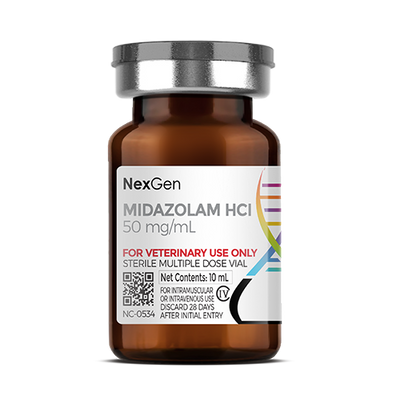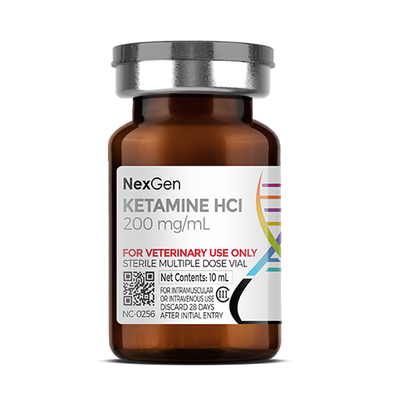
Naltrexone HCl 50 mg/mL, Injectable, (10mL)
Login for pricing
- Brand
- Mixlab
- SKU:
- NC-0272
- Product Type:
- Injectable
- Administration:
- Intramuscular
- Size:
- 10ml
- Therapeutic Class:
- Opioid Antagonist
Powerful synthetic opiates are essential tools for capturing and handling wild animals. These drugs provide rapid and relatively long-lasting immobilization that can be completely reversed by specific opiate antagonists. Although some animals initially recover within minutes of receiving an antagonist, others will revert to a partially or completely narcotized state several hours later.1
Factors believed to predispose or contribute to renarcotization include rapid metabolism of antagonists, deposition of opiates in subcutaneous tissues or fascial planes during injection, entero-hepatic shunting of opiates or metabolites, extremely high opiate doses and variable individual or species sensitivities to opiates.2 Renarcotization can potentially compromise survival of affected individuals and represents a shortcoming of opiate immobilization in wild animals. Using long-acting opiate antagonists should prevent or minimize renarcotization in wild animals immobilized with synthetic opiates.
Unfortunately, the effective durations of most available antagonists appear too short to completely prevent renarcotization in large wild animals immobilized with opiates. Renarcotization has been observed with the use of diprenorphine, nalmefene and ornaloxone HCL to antagonize opiates.3
Where to buy Naltrexone
Naltrexone is available in the U.S. through pharmaceutical manufacturers and through veterinary custom compounding companies.
Please consult your veterinarian prior to beginning any treatment regimen.
FOR RX ONLY: A valid prescription from a licensed veterinarian is required for dispensing this medication.
1Haigh, J.C. 1982. Mammalian Immobilizing Drugs: Their Pharmacology and Effects. In: Chemical immobilization of North American Wildlife, Wisconsin Humane Society, Milwaukee, Wisconsin, pp.46-63.
2Miller, M. et. al. Efficacy And Safety Of Naltrexone Hydrochloride For Antagonizing Carfentanil Citrate Immobilization In Captive Rocky Mountain Elk (Cervuselaphusnelsoni). Journal of Wildlife Diseases, 32(2), 1996, 234-239.
3Jessup, D.A., et. al. 1985. Immobilization of free-ranging desert bighorn sheep, tule elk, and wild horses using carfentanil and xylazine reversal with naloxone, diprenorphine, and yohimbine. Journal of the American Veterinary Medical Association 187:1253-1254.




















